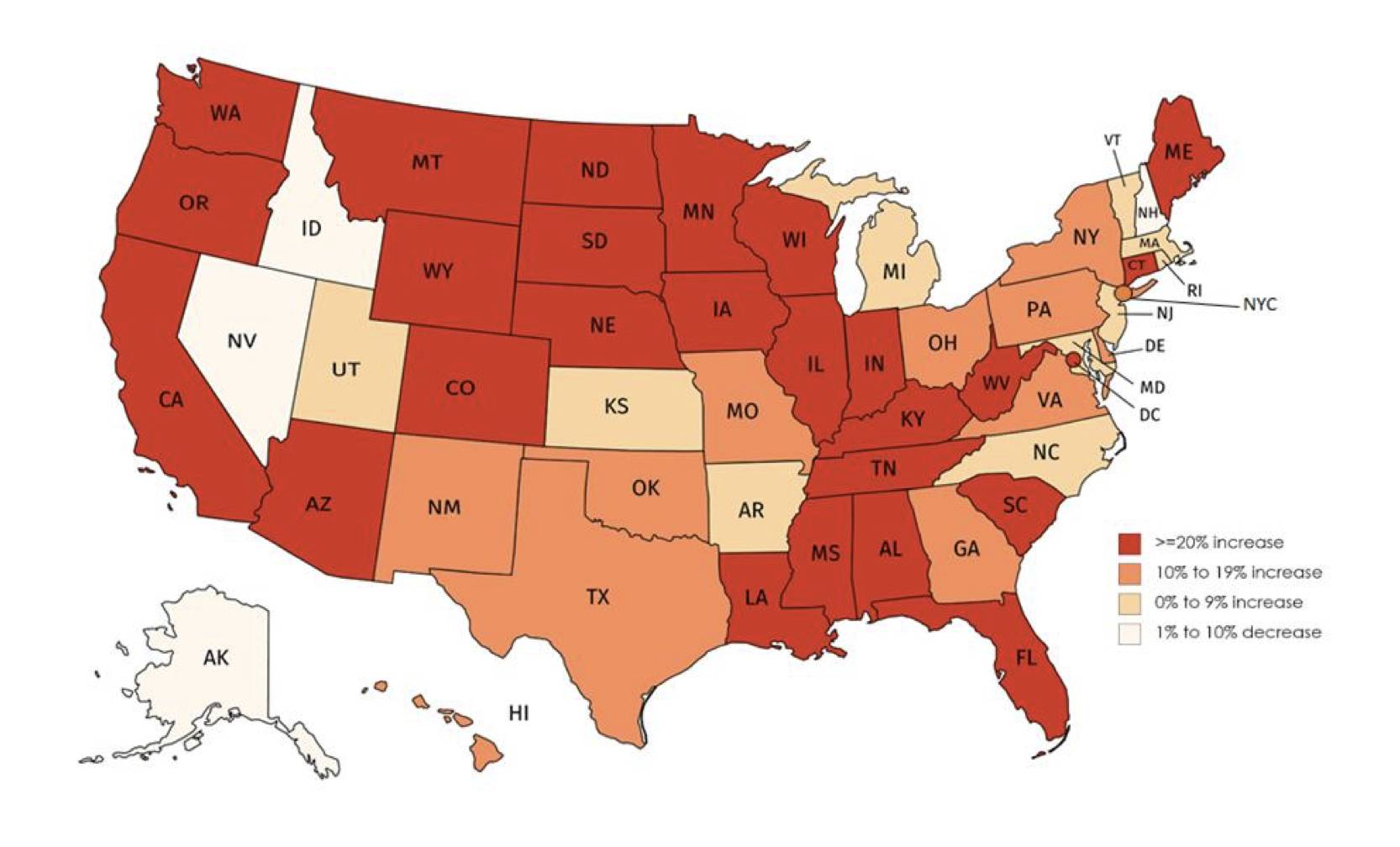
This article was last updated on April 16, 2022
Canada: ![]() Oye! Times readers Get FREE $30 to spend on Amazon, Walmart…
Oye! Times readers Get FREE $30 to spend on Amazon, Walmart…
USA: ![]() Oye! Times readers Get FREE $30 to spend on Amazon, Walmart…
Oye! Times readers Get FREE $30 to spend on Amazon, Walmart…
While everyone is distracted with "the only health issue that really matters", the United States and other nations are going through another health problem that has grown far worse over the past year. As source material for this posting, I want to look at a recent health advisory that was released from the Centers for Disease Control and Prevention, better known as the CDC.
Here is the lead page of the CDC health advisory:
According to the CDC, there has been a "concerning acceleration" of the increase in drug overdose deaths, particularly over the period from March 2020 to May 2020, the exact timeframe of the initiation of the first lockdown of the COVID-19 pandemic. Not only was there significant increase in drug overdose deaths but the geographic distribution of those deaths changed markedly. Let's look at some details.
Over the 12 month period from the beginning of June 2019 to the end of May 2020, there were approximately 81,230 drug overdose deaths in the United States, the largest number of drug overdoses for any 12-month period ever recorded. Over the 12 month period ending in May 2020, there was an 18.2 percent increase in drug overdose deaths with increases of more than 20 percent in 25 states and the District of Columbia. Here is a further breakdown:
1.) 12 months ending in February 2020 – 74,185 deaths
2.) 12 months ending in March 2020 – 75,696 deaths
3.) 12 months ending in April 2020 – 77,482 deaths
4.) 12 months ending in May 2020 – 81,230 deaths
These one month increases are the largest monthly increases documented since 12-month estimates began to be calculated in January 2015.
Let's look at the primary drugs driving the problem:
1.) Synthetic opioids – synthetic opioids are the main driver of the increase in drug overdose deaths in the United States. On a year-over-year basis to the end of May 2020, deaths related to these drugs increased by 38.4 percent with 37 of the 38 reporting jurisdictions reporting increases. Of the 37 jurisdictions that reported increases, 8 reported increases of 50 percent or more, 11 reported increases of 25 to 49 percent and 7 reported increases of 10 to 24 percent.
2.) Cocaine – cocaine overdose deaths increased by 26.5 percent on a year-over-year basis to the end of May 2020. Recent increases in these deaths are linked to the use of both cocaine and synthetic opioids, primarily illicitly manufactured fentanyl.
3.) Psychostimulants – psychostimulant overdose deaths increased by 34.8 percent on a year-over-year basis to the end of May 2020. The number of deaths involving psychostimulants now exceeds the number of cocaine-involved deaths , likely as a result of the increased availability of methamphetamine.
Here is a graphic showing the 12 month drug overdose death counts for all drugs, synthetic opioids, cocaine and psychostimulants on a rolling basis with the COVID-19 with the COVID-19 pandemic data period highlighted :
Now, let's take a brief look at the percentage change in all drug overdose deaths on a state-by-state basis over the 12 month period ending in May 2020:
Since they account for the majority of drug overdose deaths, here is a breakdown showing the same state level data for synthetic opioid overdose deaths:
As I noted above, of the 38 states that report synthetic opioid data, 18 states reported increases of death due to opioid use in excess of 50 percent on a year-over-year basis.
Let's close this posting with the CDC's recommendations:
"These newly released provisional fatal overdose data, coupled with the known disruption to public health, healthcare, and social services as a result of the COVID-19 pandemic and related mitigation measures, highlight the need for essential services to remain accessible for those most at risk of overdose and the need to expand prevention and response activities."
In their haste to battle what is turning out to be a disease that is increasingly appearing to be similar to that of a bad influenza season when it comes to excess deaths and hospitalizations, governments have proven that they are incapable of dealing with other health issues that have arisen directly as a result of their misguided and overreaching reactions. This is particularly obvious when one looks at the growth in the number of deaths from drug overdoses, a problem that is sure to grow as time passes given governments' COVID-19 response agenda.
You can publish this article on your website as long as you provide a link back to this page.

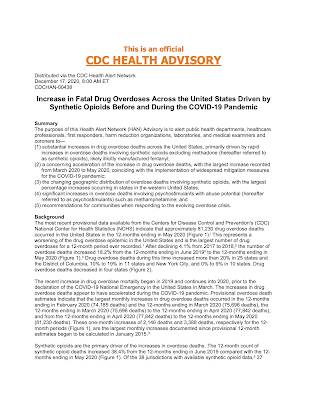
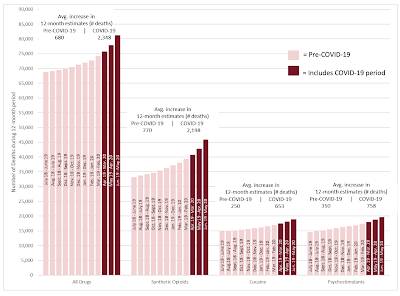
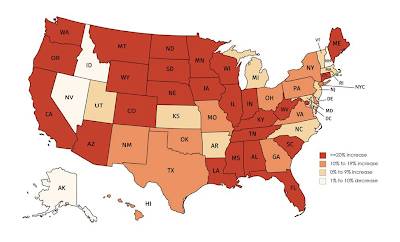
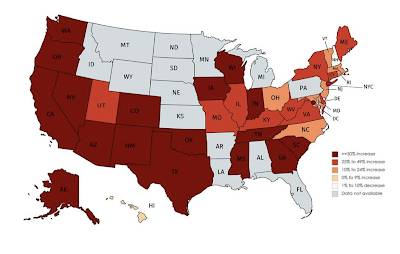
"In their haste to battle what is turning out to be a disease that is increasingly appearing to be similar to that of a bad influenza season" The worst seasonal flu season killed 65,000 people in the USA. COVID-19 has put about 460,000 people in the grave and it isn't done yet. To say it is "similar to a bad influenza" is incredibly dishonest and stupid. Clear why the USA has the worst infection and death in the world. Ridiculous articles like this. It's not done yet.